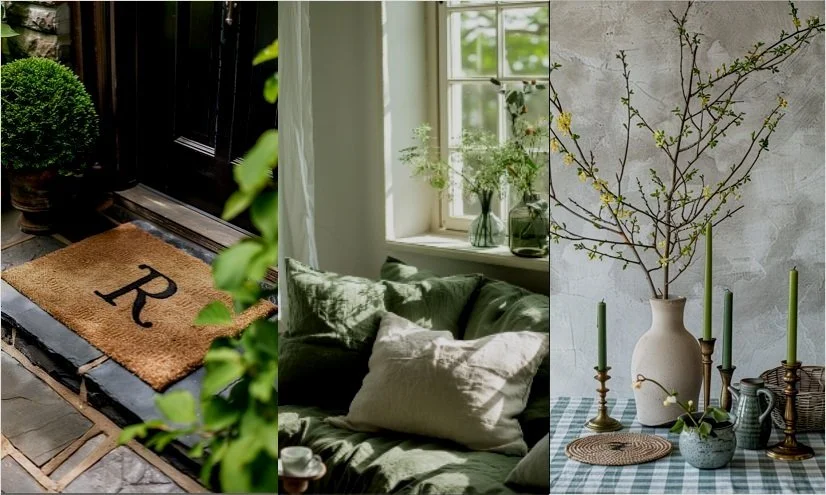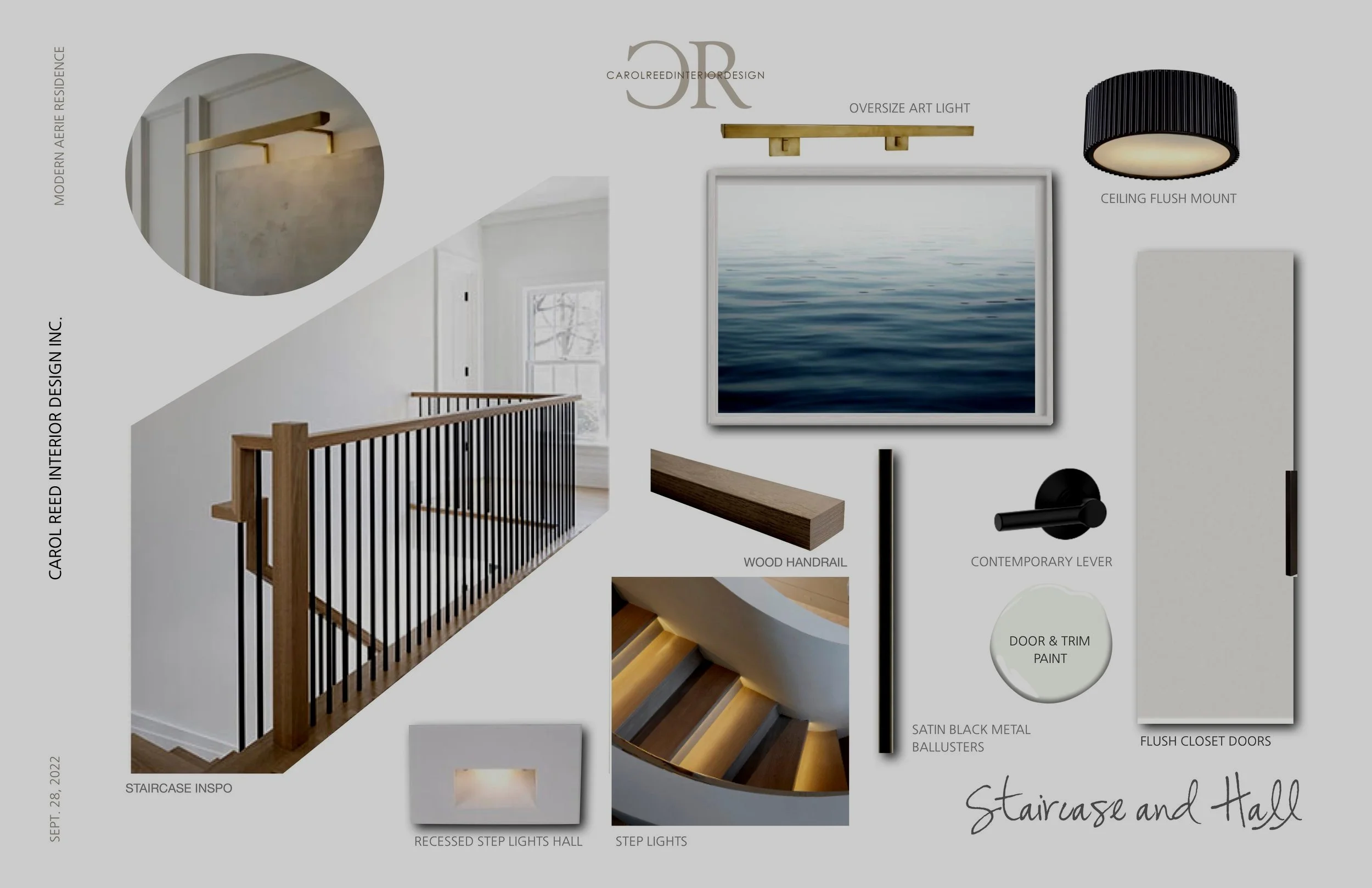
Before - the dining area of the old kitchen
The Kitchen in my new old house
on the East Coast is the second last room in the house to be renovated, today its near completion except for a ceiling light fixture and some furniture for the eating area. Renovating this kitchen was a long and painful process that has taken more than a year to complete thus far. This is what the kitchen looked like when we bought the house and how it remained until the ktichen reno started last year. (Dining area seen above, kitchen area below)




The kitchen was ugly to say the least. It came with no appliances other than an old electric stove. The exhaust hood was not vented nor recirculating (thus useless), the dishwasher didn’t work, the water was not drinkable and the sink leaked out the bottom of the cabinet when the faucet was turned on. The plastic coating on the cabinets was peeling off in large sections held in place in some spots with shipping tape. The floor was covered in peel and stick vinyl tiles which were broken in places and mis-matched patched in others. The ceiling like the rest of the main floor was acoustical tile, complete with stains.

Before & After Floor Plans
When we purchased the house I had re-designed the kitchen as part of an overall master plan that we would implement in 2 phases. The kitchen would be in the second phase about a year after phase 1. Over the course of that year while the second floor and front part of the house were being renovated I continued to re-think the new kitchen. The biggest challenge is the space itself, I really hated the old placement of it in the centre of the house. Like most old houses the kitchen had so many doorways it was like being in a hallway. One thing I knew for certain is I wanted to flip the kitchen to the other side of the room so it would be on an exterior wall with windows.
My first kitchen design plan involved moving windows and adding double french doors to the deck and incorporating a wood stove. More than a year later, far behind schedule and already over budget before phase 2 started,,,,,the priority became to re-work the kitchen without changing any of the window locations or putting in new patio doors. There were a lot of unexpected but necessary ‘blow-outs” in phase one so minimizing the work and costs for phase two was critical but I was ok with that because i felt ‘the simpler the better’ approach suited my vision for the kitchen anyway. A week before the new wood stove was to be delivered I decided to have it installed in the back sun room (family room) which would make that room useable all year and still provide heat for the kitchen. Without the wood stove in the kitchen I was left with ample room for a seating area which currently is planned as a built-in banquette.
Looking at the rest of the ground floor, the other change I made was creating separate dining and living rooms. I intentionally wanted to keep individual rooms, having lived in an open concept space once before I definitely prefer not having my living or dining room open to the kitchen, however, I do love an eat-in kitchen and open concept family rooms. I intentionally didn't build any cabinetry on the wall between the kitchen and dining room so that it could easily be opened up should any future owner want an open concept. As it is the separate dining room maintains the flexibility of becoming an office, or a bedroom if not used for dining. Figuring out what to do with the existing laundry and bathroom was key in determining my new kitchen layout. In the end moving the laundry or bathroom was not an option for many reasons besides budget, so those rooms will stay where they are and will be the next room(s) to be renovated after the kitchen.
The old combined laundry and bathroom will be divided into separate rooms, the laundry room will get a new exterior glass door to what will be a patio on the sunny west lawn of the house with views over a meadow to the beach beyond. The washer and dryer will be under counter and behind a fabric skirt, with a sink and wall cabinets this area will also function as a servery/pantry which will be convenient between the kitchen and patio area (future screened in porch). Being able to come directly into the laundry and bathroom from the yard is also a great bonus feature when you have more than an acre of lawn to mow each week - tick control means stripping down and showering after yard work. : /
The family room at the back is a single story addition to the original house, its concrete foundation has no insulation and even with ducted heating in the space it was an extremely cold room, unbearable in winter. The new wood stove keeps it toasty warm and was the best addition ever because this is not only the biggest room in the house but it also has the best views and the most sunlight - now its useable all year long.
Despite the numerous kitchen layouts I came up with none of them were ideally what I wanted and it became a very frustrating cycle of trying to decide which layout I hated the least rather than loved the most. Very. frustrating. I have piles of scrapped plans like this one.

I'm happy with the plan I decided on and know that a new layout wasn't worth making drastic or extensive changes for. I struggled with the fridge placement the most, debating over putting it to the right of the dishwasher but I just didn't want the large bulkiness of a fridge blocking the openness of the kitchen directly as you entered it. The back door is the main in/out entrance where everyone enters the house (no one uses the front door here). The compromise was to put the fridge away from the cooking/prep area but add under counter fridge drawers to the island.
With those agonizing decisions over with we moved forward in clearing out the old kitchen and putting in all new finishes. The ceiling, like the dining and living room had the original wood beams which we uncovered from under layers of tile and plaster. The floor is another story which I'll post about next…...

Kitchen reno progress.
The kitchen really is the heart of the home, I have to say that renovating this one has given me a new perspective on renovating and the reality of what is truly necessary, what matters and what doesn't matter, what brings you joy in its day to day use. A make-shift kitchen with no running water and no large appliances for months on end while endlessly waiting for trades to show up (like waiting 3 months for the electrician and 6 weeks for a plumber) was enough to make me never want to renovate again, ever. At least this house. ; ) But it also was truly revealing in many ways. For the most part, when we were here we ate as well as we did with a full functioning kitchen, and even had lots of house guests and visitors - I just had to shop very selectively and plan meals more creatively. Having survived all of that, I'll confess I'm finding the new kitchen to have an excessive amount of space compared to what I'd become use to, but for now that's one problem I'll happily enjoy living with.
For more post on my East Coast house Reno progress:
All Photos & Drawings by: Carol Reed
























